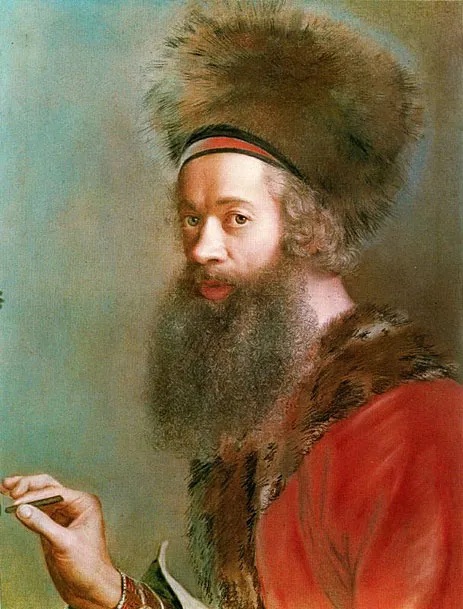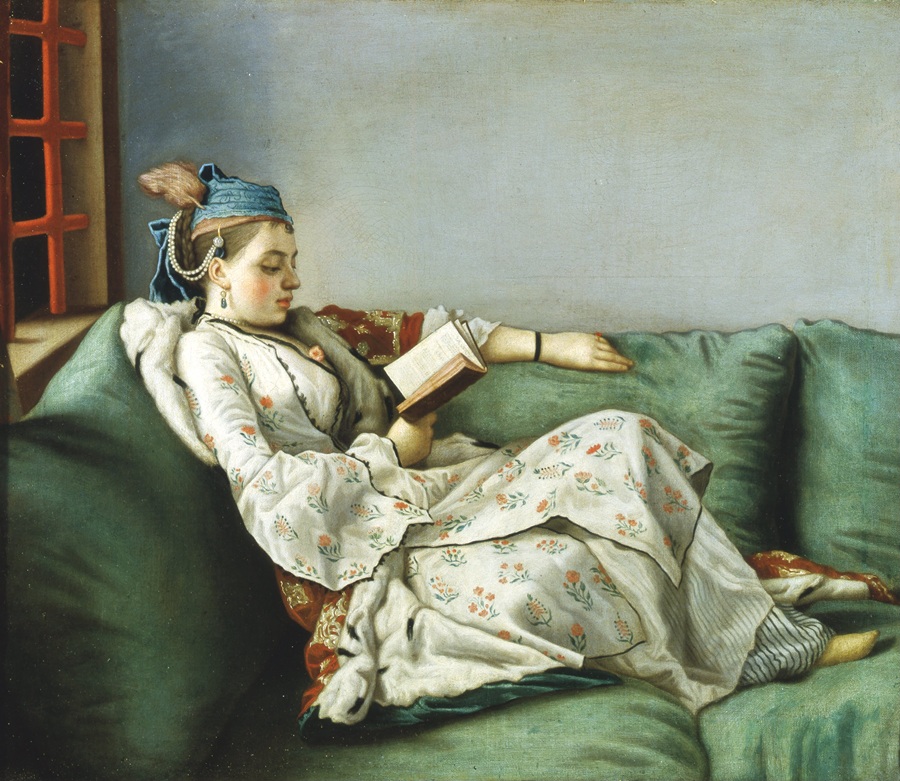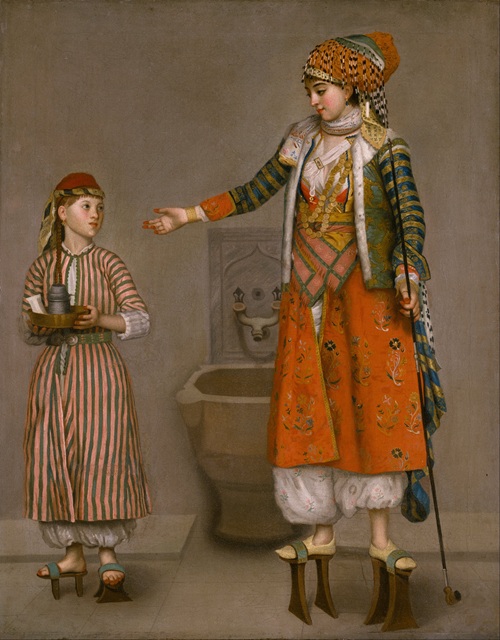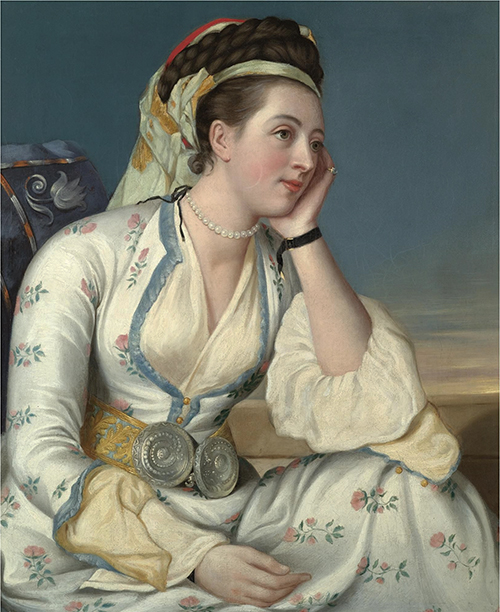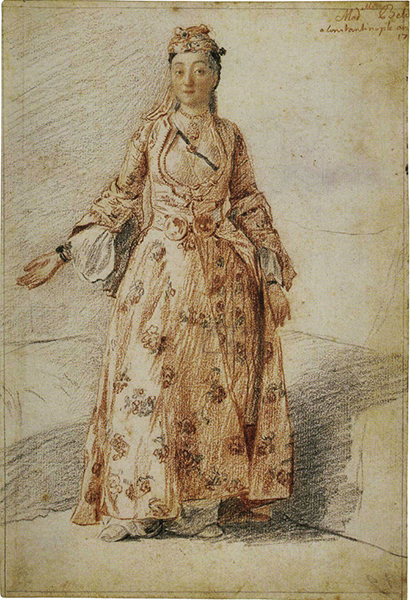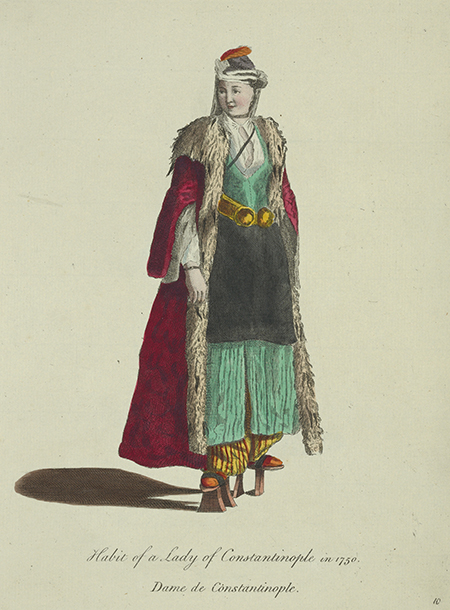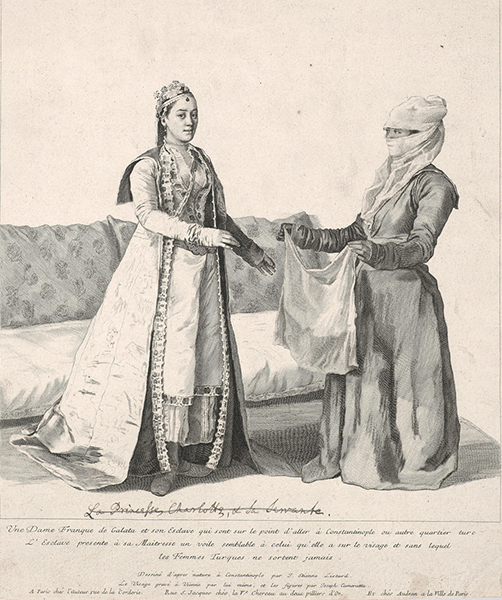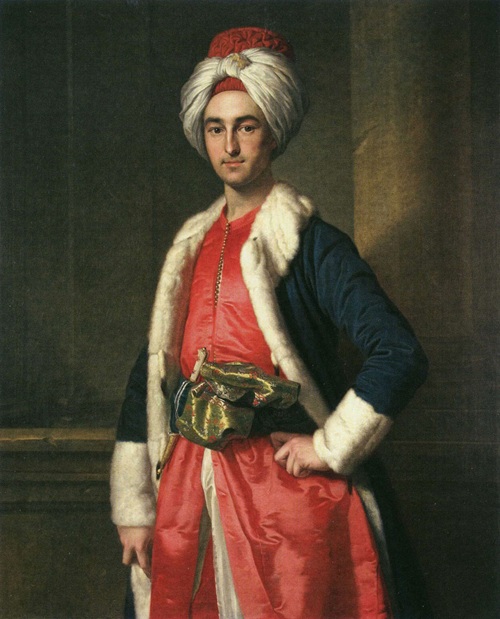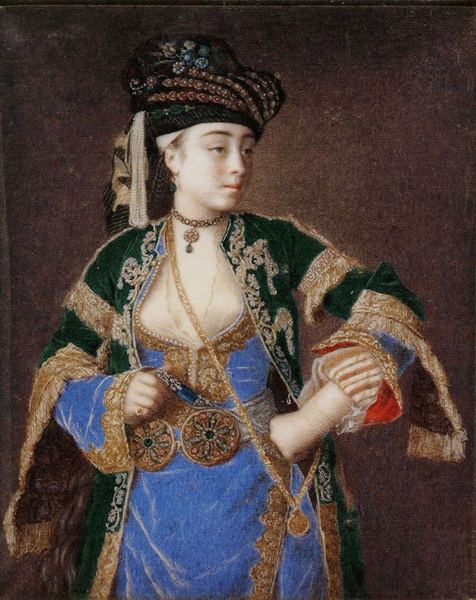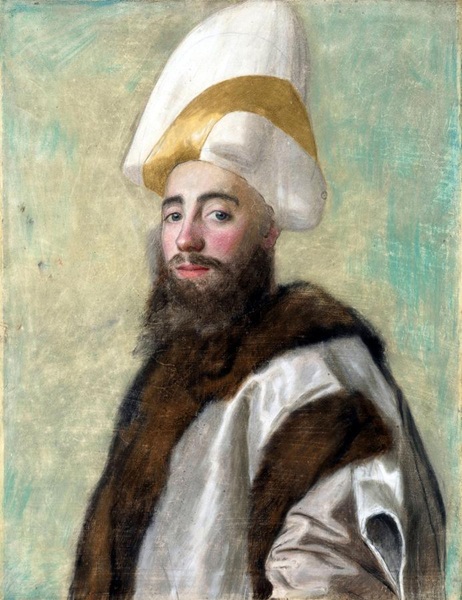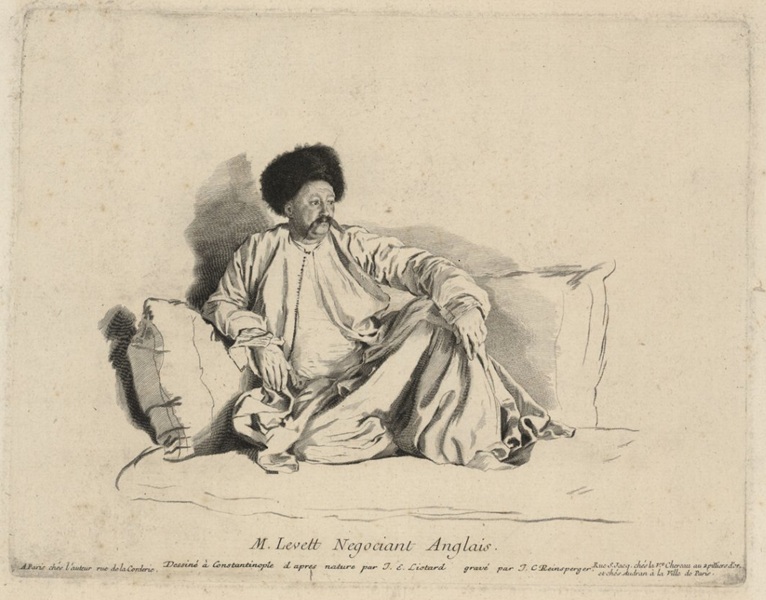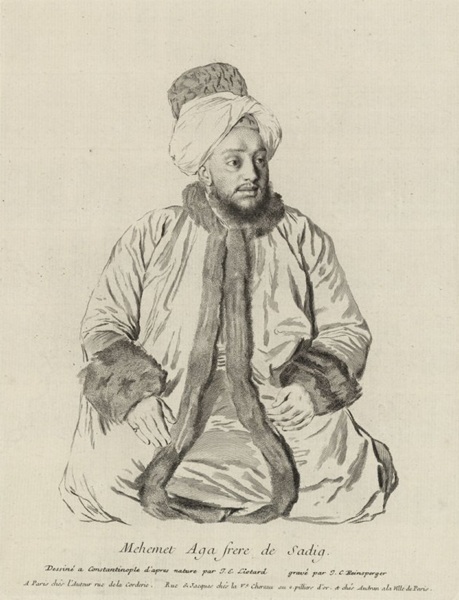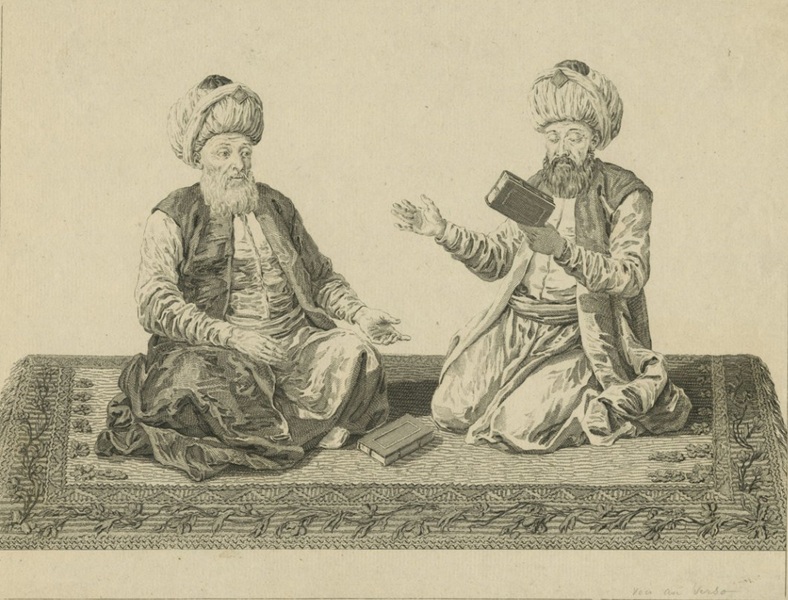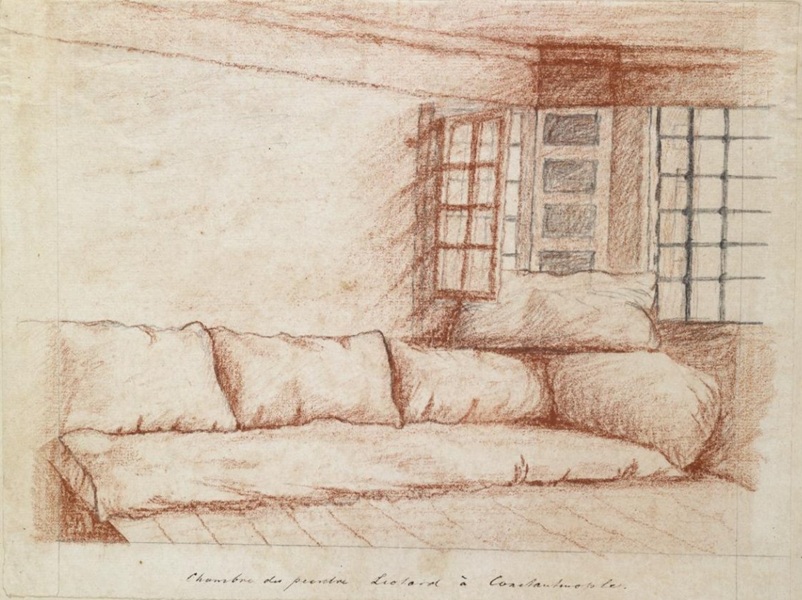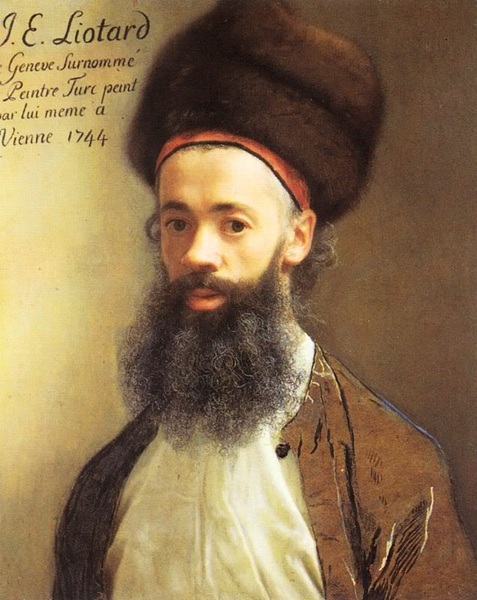
Ephemera
Jean-Étienne Liotard paintings
Jean-Étienne Liotard ( 1702 – 1789) was a Genevan painter, art connoisseur and dealer. He is best known for his detailed, strikingly naturalistic portraits in pastel, and for the works from his stay in Turkey. A Huguenot of French origin and citizen of the Republic of Geneva, he was born and died in Geneva, but spent most of his career in stays in the capitals of Europe, where his portraits were much in demand. Denied admission to the Royal Academy of Painting and Sculpture in Paris, he spent most of his career traveling in search of commissions. He worked in Rome, Istanbul, Paris, Vienna, London, and other cities.
His first journey took him to Constantinople, where he stayed from 1738 to 1742. There, he portrayed the Westerners living there and the natives with almost documentary precision. During this period, he created his only genre scenes, depicting Western women in their daily lives in the Latin quarters of Galata and Pera. Fascinated by the luxury and shimmer of the Orient he visited and experienced, Liotard took pleasure in depicting traditional Turkish costumes with a miniaturist’s precision and a keen sense of observation that today give these images a documentary quality. He also painted Westerners in Turkish dress who had never visited the Levant but who were nevertheless beguiled by the mystic East and demonstrated that in that display.
Adélaïde de France (1732 – 1800) was a French princess, the sixth child and fourth daughter of King Louis XV and Queen Marie Leszczyńska, painted here in Turkish dress in 1753.
A lady in Turkish dress and her servant. This is likely to be a high status native Ottoman lady rather than a Westerner with her high shoes designed for the wet rooms of the hamam and her long smoking pipe.
Pensive Lady on a Sofa (Dame pensive sur un sofa). Portrait of Marie Fargues, wife of the artist, in Turkish costume, Jean-Etienne Liotard, painted 1756 - 1758.
Levantine lady and a young girl in Pera (Dame franque de Péra suivie d’une fillette).
A Levantine lady in Pera, Constantinople (Dame franque de Péra à Constantinople) - a more elaborate painting clearly based on the above sketch and the theme continues below.

Frankish lady from Pera, Constantinople, painted 1738.
Lady with tambourine dressed in the Turkish manner (Femme au tambourin vêtue à la turque).
A Levantine lady in Pera, Constantinople (Dame franque de Péra à Constantinople).
Portrait of the countess of Coventry.
Mademoiselle Beli in Constantinople, painted 1738.
Book illustrations from Liotard paintings with captions that may have some inaccuracies.
Portrait of John Montagu, fourth Earl of Sandwich by Liotard in Turkish clothing. The portrait celebrates Lord Sandwich’s voyage to the Middle East in 1738-39. In July 1738 he had left Leghorn with William Ponsonby (later 2nd Earl of Bessborough) and the artist Liotard to visit Athens, Constantinople, Cyprus and Egypt. On his return Sandwich was elected FRS; he became the first President of the Egyptian Society in 1742 and founded, as ‘Vizir’, the Divan Club for Turkish travellers in 1744. His account of the voyage was published posthumously in 1799. Legend has it he was inventor of the popular snack.
William Ponsonby, Viscount Duncannon, painted by Liotard 1738. Hon William Ponsonby became one of his greatest patrons and single handedly bought 72 Liotards.
Laura Tarsi, painted as a miniature by Liotard, ‘a Grecian lady’, 1741. There is the possibility that she was the mistress of John Manners, Marquess of Granby (1721-1770) when both were living in Constantinople in the early 1740s. Many of his sitters chose to be depicted in very exotic costumes with very lush materials. Laura Tarsi’s outfit was typical of the layered look and richly embroidered fabrics that enjoyed such a vogue among fashionable Europeans.
Portrait of Richard Pococke (1704-1765) painted around 1740 by Liotard. The paths of Richard Pococke, English archaeologist and theologian, and Jean-Etienne Liotard crossed in Istanbul in June 1740. The artist’s connections with members of the British society led to his first major commissions. Pococke stopped off at the Golden Horn on his Grand Tour, a journey of initiation in the British tradition that was intended to provide young aristocrats with the ultimate enhancement to their education. With this life-size portrait, Liotard reached a milestone in his career, and was shortly afterwards truly recognized as a painter. He depicts his model in Ottoman costume, leaning against an altar symbolizing the values of antiquity; in the background, the ramparts of Istanbul can be seen, as well as monuments such as the minaret of the Tophane mosque (?) on the Bosphorus. The pictorial material is applied evenly and smoothly, without impasto, as Liotard recommended in his ‘Traité des principes et des règles de la peinture’ (Treatise on the principles and rules of painting).
Portrait of the grand vizir Nişancı Ahmed Pasha.
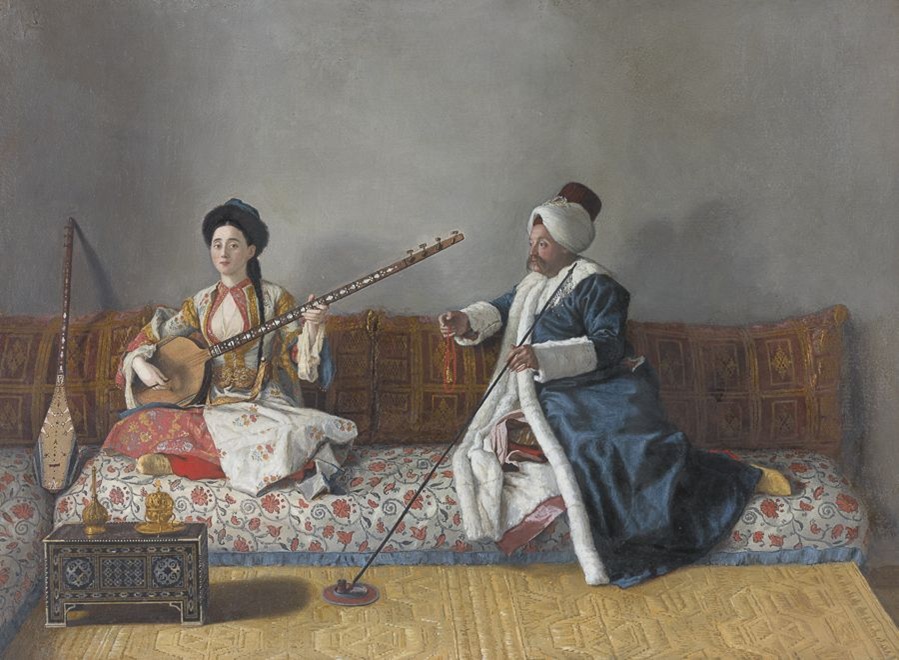
Monsieur Levett and mademoiselle Helene Glavany in Turkish costumes. Helene Glavany was the daughter of Saverio Glavani (Consul of France in Ottoman Crimea) & Marguerite Fabre, painted sometime 1738-42 during the painter’s Turkey residency. Francis Levett was the partner of Andrew Turnbull, (1718–1792) who was a British Consul at Smyrna. Turnbull organized the largest attempt at British colonization in the New World by founding New Smyrna, Florida, named in honor of his wife’s birthplace. New Smyrna, Florida Colony, founded in 1768, encompassed some 101,400 acres (410 km2) and was nearly three times the size of the colony at Jamestown.
A range of study drawings by Liotard on which his paintings were often based - M. Levett, négociant anglais.
Sadig Aga, grand trésorier des Mosquées.
Mehemet Aga, frère de Sadig.
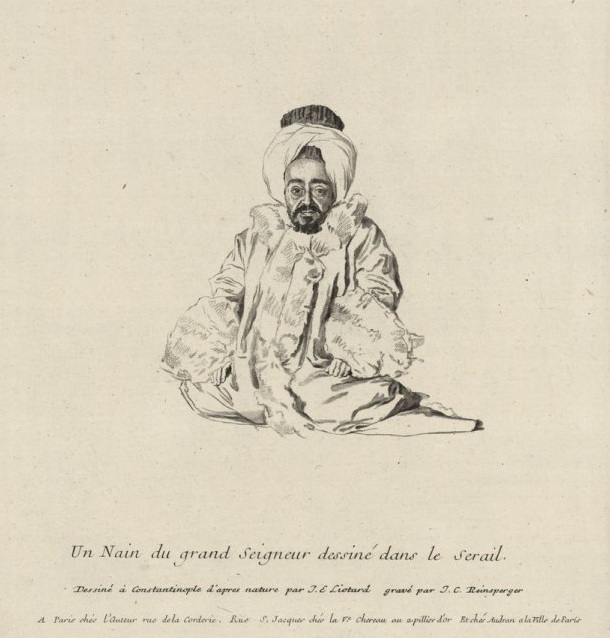
Un nain du grand seigneur dans le sérail.
Deux Turcs.
Un effendi - homme fumant sur un sofa.
Le Divan. Chambre de Liotard à Constantinople.
